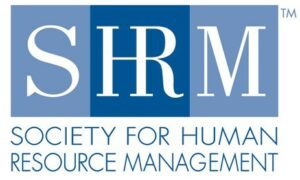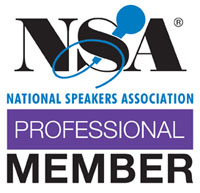Newsletter


Colorado Law Alert
January 1, 2024
Colorado: 2024 Minimum Wage Increases and COMPS #39 Adopted
Effective January 1, 2024, the Colorado minimum wage will increase to $14.42 per hour ($11.40 per hour with a tip credit) as will the minimum wage rates in the following localities:
Denver: $18.29 per hour ($15.27 with a tip credit); Edgewater: $15.02 per hour ($12 with a tip credit); and
Boulder County (only unincorporated areas): $15.69 per hour ($12.67 with a tip credit).
Employers covered by both state and local wage rates must pay whichever rate is higher.
Additionally, effective January 1, 2024, Colorado’s Overtime and Minimum Pay Standards Order #39 (COMPS Order #39) will replace COMPS #38, highlights of which include the following:
Tipped employees will be those who regularly receive more than $1.64 per hour in tips (rather than $30 per month) averaged over any pay period (1.10);
Tips will be excluded from an employee’s regular rate of pay for overtime calculation purposes (1.8.1);
Tip pool eligibility will only include workers who perform significant customer- service functions in contact with patrons (1.10(A));
Activities (or a combination of multiple activities) that take less than one minute were addressed and guidance as to whether they’re considered compensable time worked were provided. (1.9.1).
The state will release COMPS #39 and its related workplace poster by the end of the year.
(Colorado Division of Labor Standards and Statistics website; COMPS Order #39 was adopted on November 9, 2023 (proposed version))
Colorado: 2024 Minimum Wage Increases and COMPS #39 Adopted | 1 December 2023
This content is owned and provided by Mineral, Inc. “AS IS,” and is intended for informational purposes only. It does not constitute legal, accounting, or tax advice, nor does it create an attorney-client relationship. Because laws are constantly changing, we do not represent or warranty that the content is comprehensive of all applicable laws and regulations, and/or accurate as of the date of use. You are solely responsible for complying with all applicable laws and regulations. Mineral expressly disclaims any liability associated with your use of the content, and/or your noncompliance with applicable laws and regulations.
*******************
Federal Law Alert
March 20th, 2020
Families First Coronavirus Response Act – What We Know So Far
The Families First Coronavirus Response Act was signed into law on March 18, 2020.
In the coming days and weeks, federal regulatory agencies, including the Department of Labor (DOL) and Health and Human Services (HHS), will provide guidance on how to execute or implement the new requirements. In the meantime, employers and advisors must rely on a good faith interpretation of the act’s text.
We are sharing everything we know below and will not be able to answer follow up questions about the act until agency guidance has been released, which will take some time. We will update the HR Support Center when we have more information, and we encourage you to check there.
Summary
For certain circumstances related to COVID-19, employees will be eligible for:
- Up to two weeks of sick leave (full pay for self, 2/3 pay for family care) for illness, quarantine, or school closures
- Up to 12 weeks of Family and Medical Leave Act (FMLA) leave for school closures (10 days unpaid and then up to 10 weeks at 2/3 pay)
Effective Date of Law
- The FMLA and Paid Sick Leave sections discussed below will go into effect on April 2, 2020 and expire December 31, 2020.
- It appears there is no retroactive application.
Key Elements for Employers
- FMLA expansion
- Paid sick leave
- Payroll tax credit
- Group health plan benefit mandate
Emergency FMLA Expansion
Covered Employers: Employers with fewer than 500 employees are covered.
Covered Employees: Any employee who has been employed for at least 30 calendar days, though employers may be able to exclude employees who are health care providers or emergency responders.
Covered Leave Purpose: To care for a child under 18 of an employee if the child’s school or place of care has been closed, or the childcare provider is unavailable, due to a public health emergency, defined as an emergency with respect to the coronavirus declared by a federal, state, or local authority.
Duration:
- Up to 12 weeks of job-protected leave.
Compensation:
- No pay for first 10 days of leave (other paid time off, and emergency sick leave under the FFCRA, may be applied)
- After 10 days, employers must pay two thirds of the employee’s regular rate of pay for the number of hours they would normally be scheduled to work, capped at $200/day and $10,000 total.
Reinstatement to Position After Leave:
The same reinstatement provisions apply as under traditional FMLA. However, restoration to position does not apply to employers with fewer than 25 employees if certain conditions are met:
- The job no longer exists because of changes affecting employment caused by an economic downturn or other operating conditions that affect employment caused by a public health emergency;
- The employer makes reasonable efforts to return the employee to an equivalent position; and
- The employer makes efforts to contact a displaced employee if anything comes up within a year of when they would have returned to work.
Note: The act reserves the right for the Secretary to exclude certain care providers and first responders from the list of eligible employees and to exempt small businesses with fewer than 50 employees if business viability is jeopardized.
Emergency Paid Sick Leave
Covered Employers: Employers with fewer than 500 employees.
Covered Employees: All employees (no matter how long they have been employed), though employers may be able to exclude employees who are health care providers or emergency responders.
Covered Leave Purposes:
- When quarantined or isolated subject to federal, state, or local quarantine/isolation order;
- When advised by a health care provider to self-quarantine (due to concerns related to COVID-19);
- When experiencing symptoms of COVID-19 and seeking a medical diagnosis;
- When caring for an individual doing #1 or #2 (2/3 pay);
- When caring for a child whose school or place of care is closed due to COVID-19 (2/3 pay); or
- When the employee is experiencing any other substantially similar condition (2/3 pay).
Duration of Leave:
- Full time employees are entitled to 80 hours of paid sick leave.
- Part time employees are entitled to sick leave equal to the number of hours worked on average over a typical two-week period.
Rate of Pay:
- ·Sick leave must be paid at the employee’s regular rate of pay for leave used for the employee’s own illness, quarantine, or care.
- Sick leave must be paid at two-thirds of the employee’s regular rate if taken to care for a family member or to care for a child whose school has closed, or if the employee’s childcare provider is unavailable due to the coronavirus.
- Pay is capped at $511/day and $5,110 total for reasons 1, 2, and 3 described above.
- Pay is capped at $200/day and $2,000 total for reasons 4, 5, and 6 described above.
- Interaction with Other Employer-Provided Paid Sick Leave and other Paid Leave:
- This act does not preempt existing state and local paid sick leave requirements.
- Employers cannot require employees to use other leave first.
- Sick leave provided for under the act does not carry over from year to year, and the requirements expire December 31, 2020.
Notice Requirements:
- Employers must post a model notice, which will be provided by the federal government.
Note: The act reserves the right for the Secretary to exclude certain care providers and first responders from the list of eligible employees and to exempt small businesses with fewer than 50 employees if business viability is jeopardized.
Payroll Tax Credit:
- Applies to both the emergency FMLA expansion and the emergency sick leave.
- Dollar for dollar credit for sick leave and paid FMLA wages against the employer portion of Social Security taxes.
- Refund is possible for amounts that exceed what is available as a credit.
- Limits on what can be claimed mirror the caps for what must be paid.
Health Plan Benefit Mandate:
- The act requires all insured and self-funded medical plans, including grandfathered plans, to cover diagnostic testing-related services for COVID-19 at 100 percent without any deductibles or co-pays.
- Examples include services provided by doctors, emergency rooms, and urgent care centers leading up to the decision that testing is needed, along with the actual lab-based testing.
- The mandate does not apply to treatment.
Read US H.R. 6201.
Questions?
Ann Hogan Consulting, LLC
9191 Sheridan Boulevard
Westminster, CO 80031
Phone: 303-916-6439
Email: ann@annhoganconsulting.com
Visit us online:
Our COVID-19 Resources Page contains sample communications to employees, telecommuting resources, and links to various federal resources including the CDC and OSHA, as well as state and local resources where available. We recommend checking this page regularly for guidance.
Legal Disclaimer: The HR Support Center is not engaged in the practice of law. The content in this email should not be construed as legal advice, and does not create an attorney-client relationship. If you have legal questions concerning your situation or the information you have obtained, you should consult with a licensed attorney. The HR Support center cannot be held legally accountable for actions related to its receipt.
To change your subscription preferences, please click here.
©2020 HR Support Center
Professional Credentials
Professional Credentials






